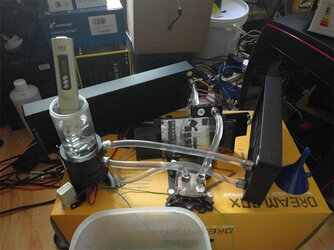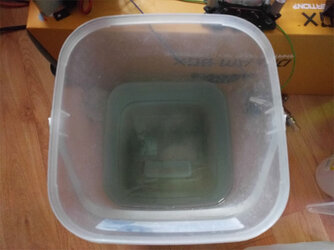- Joined
- Mar 7, 2008

I ran this for some months and decommissioned it when I changed case and went back to air. One of the decisions for that was that I could see some residue buildup in the waterblock. It was a light off-white colour. I also noticed the tubes going cloudy as was the reservoir.
This weekend, I finally got around to cleaning it for reuse in what will be my secondary OC bench system. I flushed it once through with deionised water. This seemed to have a suspension in it, but wasn't clear. I thought something harder was needed. Looking around my chemical store, the only candidate was citric acid I had previous bought to clean fish keeping equipment. It's pretty mild and safe, you can eat it pretty much straight from the tub. I dissolved a bunch of it in some water (couple tblsp/l ball park) and made sure it was fully dissolved before putting it into the loop.

First run was very interesting. The liquid that went in was clear and colourless like water. It went a pale blue-green colour, so it was doing something to something. I poured it out into a container, where after leaving it to settle, I could see a darker particulate falling out of suspension. I made another batch and run that through, this time no visible colour change so whatever it was, it was done. The tubes were looking obviously clearer now. Most of the residue in the block had gone out now, at least in the areas of flow.
Now I'm doing flushing of the system before reuse. Again using deionised water, which I checked with a TDS meter was reading zero before use. This is a conductivity measurement that expresses how much dissolved stuff is in water equivalent to table salt in ppm. First flush read over 600. 2nd flush just under 60. 3rd flush down to 6, where I think I'll stop. It isn't worth the effort to try and get it to zero as any impurity will keep it above that.
Next up is a drain and dry, ready for re-installation.